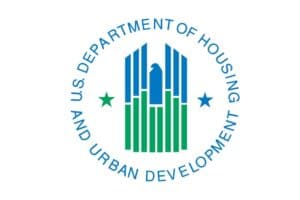On December 31 the Internal Revenue Service (IRS) released safe harbor guidance (Revenue Procedure 2014-12) for structuring federal historic tax credits transactions, which is expected to attract more investment activity. The guidance was developed in response to recent court case Historic Boardwalk Hall vs. IRS Commissioner, which had a chilling effect on historic tax credit activity. The ruling is expected to have significant implications on how tax credit transactions are structured going forward, particularly related to partnership arrangements. The Treasury Department and the IRS intend for the Safe Harbor to provide partnerships and partners with more predictability regarding the allocation of rehabilitation tax credits to partners of partnerships that rehabilitate certified historic structures and other qualified rehabilitated buildings.
Overall, industry experts are pleased with the quality of the Revenue Procedure as well as the flexibility and transparency the IRS displayed during the process of writing this Procedure. Based on our NH&RA interviews with industry experts, we believe that this guidance will curb much of the wariness that historic tax credit investors have demonstrated recently. Below is a summary of the Revenue Procedure.
NH&RA will host a session at its upcoming Annual Meeting (Feb 19-22 in Palm Beach, FL) to debrief industry stakeholders on the implications of Revenue Procedure 2014-12, particularly as it relates to partnership structures and exits. Click here to learn more about the meeting and agenda.
This guidance comes about after a lengthy process by which the U.S. Third Circuit Court ultimately opined that the historic tax credit (HTC) equity investor, Pitney Bowes, Inc., was not a true partner in Historic Boardwalk Hall (HBH) transaction. The key factors behind the Circuit Court’s opinion included a determination that the investor partner lacked a "meaningful stake in either the success or failure of [the partnership]" and as result was not a "bona fide partner."
Revenue Procedure 2014-12 clarifies certain requirements for satisfying partnership arrangements and a new Safe Harbor criteria. The Procedure specifically indicates that “the [IRS] will not challenge a partnership’s allocations of validly claimed [Section] 47 rehabilitation credits if the partnership and its partners satisfy the Safe Harbor” but that “a partnership and its partners that do not satisfy each of the requirements in [the] revenue procedure do not qualify for the Safe Harbor.”
Safe Harbor Criteria (Section 4 of Rev. Proc. 2014-12)
Partners’ Partnership Interests. The principal must have a minimum one percent interest in each material item of partnership income, gain, loss, deduction, and credit at all times during the existence of the partnership. In addition, the investor’s partnership interest must constitute a bona fide equity investment with a reasonably anticipated value commensurate with the investor’s overall percentage interest in the partnership, separate from any federal, state, and local tax deductions, allowances, credits, and other tax attributes to be allocated by the Partnership to the Investor. The notice also stipulates that the investor’s interest must constitute a bona fide equity investment with a reasonably anticipated value commensurate with the investor’s overall percentage interest in the partnership and the value of the investor’s partnership interest may not be reduced through unreasonable fees, lease terms, or other arrangements.
Investor’s Minimum Unconditional Contribution. The investor must contribute to the partnership a minimum unconditional amount equal to 20 percent of the investor’s total expected capital contributions before the date that the Building is placed in service.
Contingent Consideration. At least 75 percent of the Investor’s total expected capital contributions must be fixed in amount before the date the Building is placed in service. The Investor must reasonably expect to meet its funding obligations as they arise.
Guarantees and Loans: The revenue procedure details permissible and impermissible guarantees. Permissible guarantees include unfunded guarantees such as completion guarantees, operating deficit guarantees, environmental indemnities, and financial covenants. The Procedure does prohibit guarantors from including minimum net worth requirements in guarantee arrangements. Other impermissible guarantees include those which a person not involved with the transaction directly or indirectly insure the investor’s ability to claim the credits or the cash equivalent of the credits or guarantees that pay the investor’s cost if the IRS challenges the investor’s claim of the rehabilitation credits. Revenue Procedure 2014-12 also states that a developer partnership, master-tenant or any principal involved in either type of partnership may lend an investor the funds to acquire any part of the investor’s interest in the partnership or guarantee.
Purchase and Sales Rights. Neither the principal or the partnership may have a call option or other contractual right or agreement to purchase or redeem the investor’s interest at t future date and the investor may not require any person involved in the transaction to purchase or liquidate the investor’s interest in the partnership at a future date at a price that is more than its fair market value.
Items of note within the Safe Harbor criteria include:
- It is unclear why the IRS has decided to prohibit the inclusion of minimum net worth requirements in guarantee agreements. Thus, the general partner can only guarantee his own acts or omissions, shifting much of the structure risk to investors.
- It appears that investor exits and specifically “puts” and “calls” will be structured fairly differently then in the past and there is no longer the ability for one party to abandon its interest in the partnership agreement.
- The Procedure also precludes investors from charging unreasonable fees, lease terms, or other arrangements to reduce value of interest in the partnership, but it is unclear exactly what the term “unreasonable” means or likewise what, if any, a reasonable fee or lease term would be.
Industry experts in general appear to be pleased with the ruling. Many believe that this guidance will alleviate some of the uncertainty caused by the Historic Boardwalk Hall ruling and that investors will slowly begin to return to the historic tax credit market. The extent to which the IRS will apply the same principles to partnerships investing in other asset classes is unclear.
NH&RA will host a session at its upcoming Annual Meeting (Feb 19-22 in Palm Beach, FL) to debrief industry stakeholders on the implications of Revenue Procedure 2014-12. Click here to learn more about the meeting and agenda.
Click here to read Revenue Procedure 2014-12.


